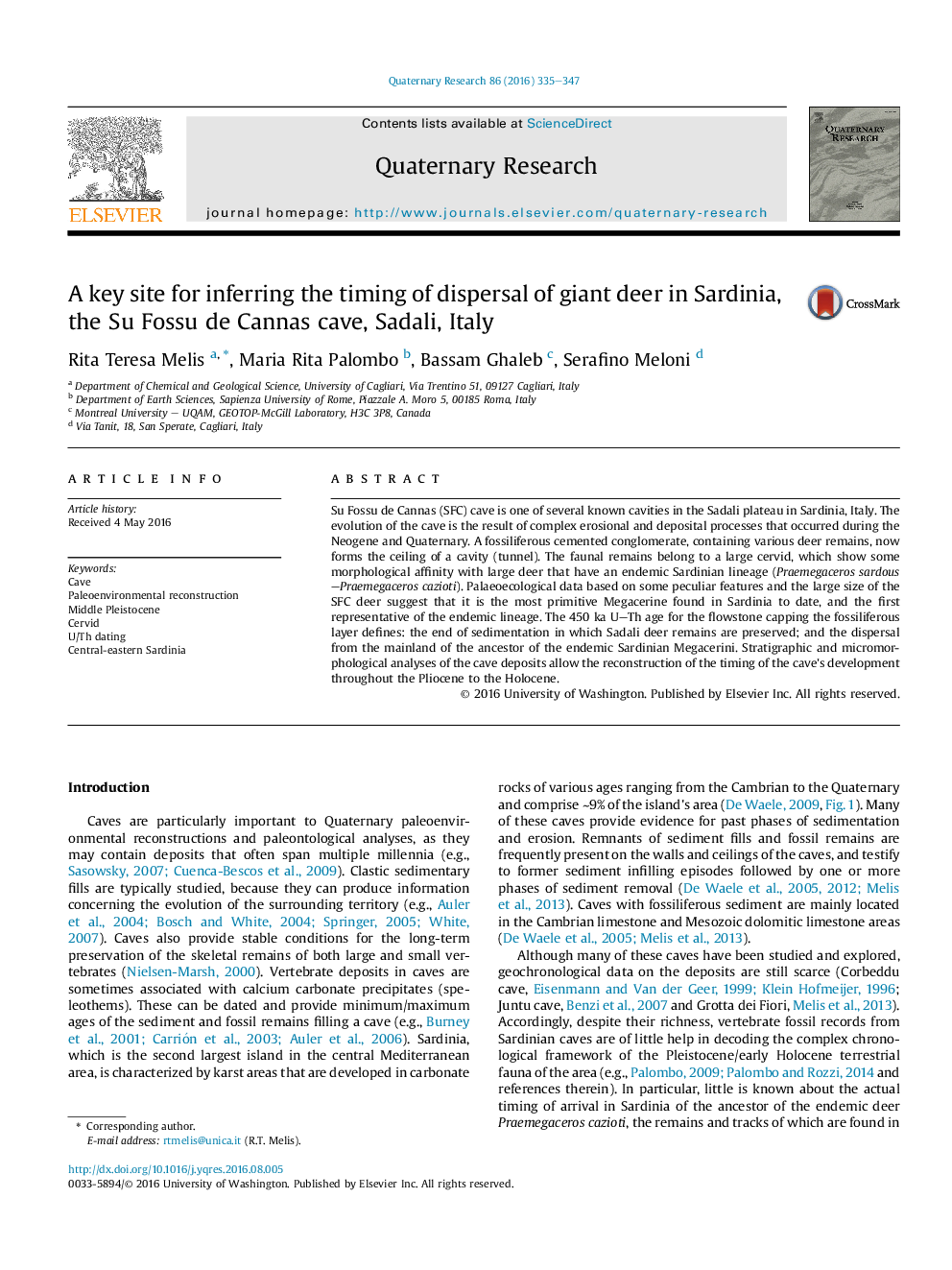| Article ID | Journal | Published Year | Pages | File Type |
|---|---|---|---|---|
| 7453380 | Quaternary Research | 2016 | 13 Pages |
Abstract
Su Fossu de Cannas (SFC) cave is one of several known cavities in the Sadali plateau in Sardinia, Italy. The evolution of the cave is the result of complex erosional and deposital processes that occurred during the Neogene and Quaternary. A fossiliferous cemented conglomerate, containing various deer remains, now forms the ceiling of a cavity (tunnel). The faunal remains belong to a large cervid, which show some morphological affinity with large deer that have an endemic Sardinian lineage (Praemegaceros sardous-Praemegaceros cazioti). Palaeoecological data based on some peculiar features and the large size of the SFC deer suggest that it is the most primitive Megacerine found in Sardinia to date, and the first representative of the endemic lineage. The 450Â ka UTh age for the flowstone capping the fossiliferous layer defines: the end of sedimentation in which Sadali deer remains are preserved; and the dispersal from the mainland of the ancestor of the endemic Sardinian Megacerini. Stratigraphic and micromorphological analyses of the cave deposits allow the reconstruction of the timing of the cave's development throughout the Pliocene to the Holocene.
Related Topics
Physical Sciences and Engineering
Earth and Planetary Sciences
Geology
Authors
Rita Teresa Melis, Maria Rita Palombo, Bassam Ghaleb, Serafino Meloni,
